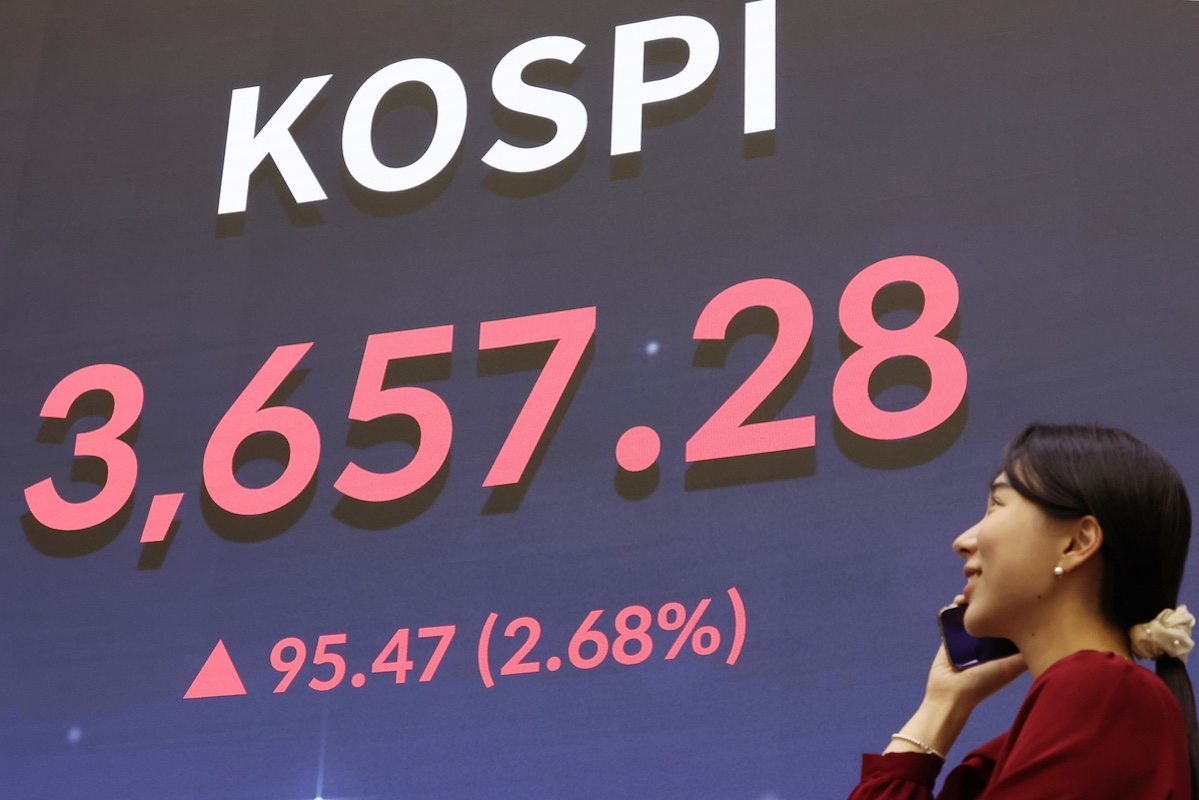South Korea’s stock market has just sent a powerful message to the world: global investors are adapting to the new trade era faster than many governments.
The Kospi index closed at a record high on Thursday, climbing 2.49% to 3,748.37, after the International Monetary Fund raised its 2025 growth forecast for South Korea to 0.9% from 0.8%.
This upgrade might seem marginal, but its significance lies in what it represents, which is a clear acknowledgement that the global economy is withstanding, and even adjusting to, the headwinds of tariffs, realignment and policy uncertainty.
The IMF didn’t just lift its view on South Korea; it also nudged up its global growth projection, saying the impact of Trump’s tariffs was “at the modest end of the range.”
For an institution that typically errs on the side of caution, that phrase is telling. It means the world is proving far more resilient than predicted, and the global trading system, despite the political noise, remains largely open for business.
South Korea is a clear example of that resilience in action. The country’s export machine has long been a bellwether for global industrial health. Its markets are highly sensitive to fluctuations in semiconductor demand, automobile sales, and shipping volumes — sectors that reflect the pulse of world trade.
The IMF’s optimism, combined with renewed diplomatic activity between Seoul and Washington, is helping investors look beyond the tariffs and see opportunity.
US Treasury Secretary Scott Bessent told CNBC this week that Washington is “about to finish up” trade negotiations with South Korea.
Even without final details, those words carried weight. They hint at a potential stabilization in one of the world’s most important trading relationships — a stabilization that markets immediately priced in.
The rally that followed was broad and emphatic. Hyundai Motor surged more than 8%, Kia climbed over 7%, and Samsung Electronics hit an all-time high, rising 2.84%. Industrial equipment firms and exporters also advanced, reinforcing the sense that investors are once again rewarding economies built on real production, not just liquidity.
Behind this optimism lies something more profound: proof that supply chains have evolved.
The IMF cited the “agility of the private sector” as a key reason for its upgrade, noting how businesses front-loaded imports in the first half of the year and reorganised trade routes to bypass bottlenecks.
The corporate response to tariffs has been faster, smarter, and more global than policymakers expected. In short, private enterprise has outmanoeuvred politics.
This is the new global trade reality. Companies are not waiting for governments to fix the rules; instead, they are rewriting them through diversification and technology.
South Korea, with its sophisticated logistics, advanced manufacturing, and deep trade ties across Asia, has been at the forefront of this shift. Its firms have developed alternative supply routes, hedged costs effectively, and expanded into markets where US–China tensions have created openings.
There are three clear takeaways for global investors.
First, tariff anxiety has limits. Markets are showing that adaptation can blunt the economic impact of protectionism. The IMF’s findings that the effects of US tariffs are “modest” highlight that flexibility, innovation, and global integration can still produce growth even in a constrained policy environment.
Second, Asia’s industrial core remains pivotal. South Korea’s success reflects a broader regional strength. Semiconductor demand is rebounding, electric vehicle exports are accelerating, and industrial equipment manufacturers are benefiting from nearshoring and infrastructure upgrades worldwide.
For wealth managers, this suggests that selective exposure to Asia’s export economies, particularly those with strong corporate governance and advanced manufacturing bases, is once again justified.
Third, trade diplomacy still matters to market psychology. Investors are sensitive to tone as much as to tariffs. Bessent’s comments may have been brief, but they reminded markets that dialogue continues — and that cooperation, however fragile, remains preferable to confrontation.
The IMF’s forecast upgrade also speaks to a deeper structural insight: globalisation is not ending, it is evolving. Supply chains are being rebalanced, not dismantled. Production is shifting, not shrinking.
The overall result is a more diversified, multipolar trading system — one where economies like South Korea, India, and Vietnam emerge stronger from the turbulence.
It would be naïve to suggest the risks have vanished. For instance, technology restrictions could tighten, and the political cycle in both Washington and Beijing could inject fresh volatility. But the last few months have demonstrated that markets can, and will, adapt to disruption. Investors who understand this dynamic are positioning themselves accordingly.
South Korea’s rally is not just about national pride or short-term momentum. It’s an indicator of a world that is quietly learning to operate under new trade rules.
Global investors are no longer paralysed by uncertainty; they’re identifying where policy friction creates relative advantage. As a result, capital is moving again, and naturally towards efficiency, innovation, and flexibility.
Private enterprise is leading where politics lags. It’s a reminder that opportunity often emerges from constraint.
The Kospi’s record high is a milestone not just for Seoul, but for global markets. It marks the point where adaptation overcame anxiety. The world may not look like the free-trade order of a decade ago, but it is still open enough, and inventive enough, to grow.

